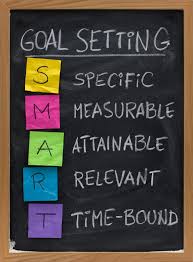I’ve started a new savings routine that is blowing me out of the water. That sounds weird to say, but it’s true. It’s an idea I directly lifted from a book called “The Automatic Millionaire” by David Bach.
The crux of the idea is that you put 10% of everything you make into a savings or retirement account. Everything.
If someone hands you a dollar, you put a dime into savings. You make $1,000, well, $100 goes into your savings account. 10%, all the time. From the savings account, you can distribute the money in a few ways:
- Leave it in there to serve as a cushion (it’s a good idea to have 3-6 months of expenses saved)
- Transfer to IRA
- Save up for a goal (down payment on a car/house, repairs/renovations, etc)
- Pay down student loans or other debts
- Simply save it for peace of mind
After I read “The Automatic Millionaire” I started putting this into practice. It’s been about 2 months by now, and I’m kind of amazed at how much I’ve already been able to save – automatically.
It also signaled a shift in my mindset.
- It meant creating a new habit loop.
- It meant exploring new goals.
- And most important of all, it was a demonstration of commitment toward my own future.
Why 10%?
10% seems to be the magic number. The lowest you’d want to go is just 1% – an amount attainable for anyone. A penny a dollar. The other extreme is saving anything above 20%. If you’re capable of that, by all means go for it.
10% is a round number. Just move the decimal point over 1 place. It’s easy to remember, and most importantly, it’s effective.
What to do with your 10%?
My plan is to save half of my 10% and to transfer the other half directly into my Roth IRA. That, combined with what I earn from my FIA Fidelity Amex, is helping me to max out my contribution limit for the year.
The other half that I am saving will be used for a down payment on a house or condo (hopefully sometime in the near future. This is my goal – to own property).
With whatever I have left over in my checking account after bills are paid, I pay as much as possible toward my student loans, and then put the rest into my Roth IRA.
Saving 10%, at first, doesn’t seem like a significant amount. But as the months continue go by, I realize how much of an impact I’m making for myself. Since I’m self-employed, it’s entirely up to me how much to save. While I’d recommend 20%, I can’t say that’s what I practice. 10% seems to be the right combination of ease and stringency – I understand it, it’s powerful, and it’s yielding results.
If you are already maxing out a 401(k) or other retirement vehicle, you should still save a little more anyway, if you can. Maybe try 5%. Having some liquid cash on hand can really help if you ever get into a jam (think rainy day fund here). If you’re saving 10% of your check already in a retirement account, that totally counts for The 10% Plan. My situation is a little different, so I’m using a regular savings account, then redistributing funds from there.
In application
This is where the habit loop comes into play. So here’s the Cue, Routine, and Reward.
The cue is any new income in my checking account.
The routine is to automatically transfer 10% of every new amount to my savings account.
The reward is watching my savings grow, and knowing that I’m getting closer to my goals. It’s measurable, relevant, moderately time-sensitive, very specific (10% is the number), and easily attainable.
I had to overcome my own objections that I would need the money for other things, or that I couldn’t afford to save. And I have felt a little bit of a pinch. But you know what? Life goes on, and the satisfaction of watching my savings grow far outweighs a trip to the bar or another thing I know I don’t really need. In that regard, it’s helped me to really pinpoint what’s important now and what will important later.
Psychological effects
This can’t be overstated, and I really wasn’t expecting this. My first instinct was to hide the savings account from my Mint.com budget and to set it to not show up on my online banking profile. The theory was – out of sight, out of mind. If I can’t see it, I won’t be tempted by it.
The inverse has happened. Not only do I want to see the balance grow, I’m loving it. It’s fun to add funds into the account now. The reward is reason enough all on its own.
I have been bleeding my savings dry this year gearing up for multiple income streams. But in the process, I’ve sacrificed security. Starting to see my security grow again has improved my outlook tremendously. It also makes me seek out any and all income because I know I’ll get to put 10% of it away.
Save up or pay down?
This one is a toughie. Here’s my dilemma: it’s great to watch savings grow, but I still have student loans that are accruing new interest every day (it kills me to type that). So what do I do? Save, or pay down debts?
For me, the answer was to split the savings 50/50 and take a hybrid approach. First, I try to pay what I can out of checking account before I go digging into the savings. After all, I don’t want the balance to go down – but I also sure as hell don’t want my student loans going up any more, either! And the end of the month, I allow myself to transfer a little of what I’ve saved to my student loans – and the rest to my IRA. And therein is the psychological satisfaction of watching one balance grow and another one – thank god – start to shrink.
This was by far the biggest sticking point for me, but this hybrid approach seems to be the best solution, and it will be different for everyone.
Bottom line
I’ve become Mr. 10% lately.
If you’re not already saving, the best time to start was 10 years ago. The next best time to start is right now, today. Just like growing a tree – you have to start somewhere, especially if you don’t have any savings for whatever reason (which was where I found myself recently).
The other important thing is to transfer the 10% first. Not after you pay bills, not after you go out, or after… anything. First. You might miss it – or think you miss it – for a few weeks, but as the habit roots itself, I promise you’ll forget you’re even doing it at a certain point.
Does anyone else have a savings strategy they like to use? I’d love to hear from those that are self-employed or have irregular income – any tips or insights are welcome.
* If you liked this post, consider signing up to receive free blog posts in an RSS reader and you’ll never miss an update!Earn easy shopping rewards with Capital One Shopping—just log in and click a link.
Announcing Points Hub—Points, miles, and travel rewards community. Join for just $9/month or $99/year.
BEST Current Credit Card Deals
The responses below are not provided or commissioned by the bank advertiser. Responses have not been reviewed, approved or otherwise endorsed by the bank advertiser. It is not the bank advertiser's responsibility to ensure all posts and/or questions are answered.




When I was in my early 20s one of Sir John Templeton’s partners gave me the advice to save 50% of every raise. You don’t feel the loss from the savings, because it’s money you never had before.
YES YES YES! Keep your cost of living the same and bank the rest. Love it!
We’re doing 50% these days. Can’t wait for retirement!
Holy crap, that’s amazing! You’ll be to FI in no time. Huge congrats and kudos!
There is no link to open an account. Very defficult to open an account on line
Which account do you mean?
Do you manually set up the dollar amount once you’ve received a cue (and is the cue simply an account change alert kind of thing?) or is there a way to set 10% as the transfer amount?
I just do it manually every time via the mobile app.
But you can set up a recurring transfer – as a dollar amount, though, not as a percentage. If you have a set paycheck coming in, it would be easy to set up a 10% transfer. But my amounts all vary, so I stick to 10% as a manual transfer.